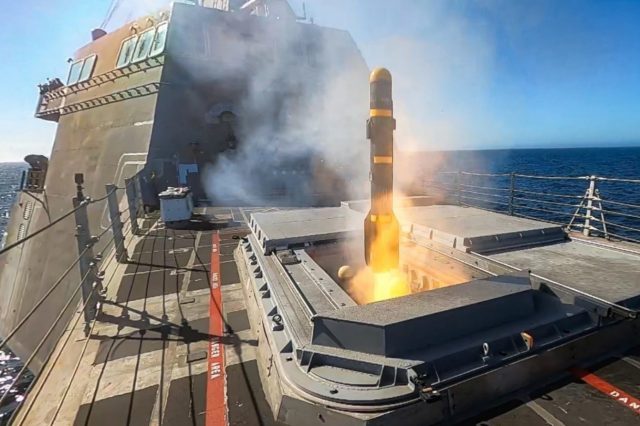
The US Navy’s littoral combat ship (LCS) class successfully launched sea-based missiles at a land-based target for the first time during a proof of concept exercise on May 12.
Independence-variant LCS USS Montgomery fired three Longbow Hellfire missiles to strike a land-based target as part of the LCS surface-to-surface mission module (SSMM).
“This test proved the critical next step in increasing lethality of the littoral combat ship,” said Cmdr. Dustin Lonero, Montgomery’s commanding officer. “Using our speed and shallow draft, we are now uniquely optimized to bring this level of firepower extremely close to shore in support of our warfighters and operators on the beach.”
The US Navy achieved the milestone even as it has already started decommissioning the Independence variant after barely more than a decade of service.
LCS are outfitted with mission packages (made up of mission systems and support equipment) that deploy manned and unmanned vehicles and sensors in support of mine countermeasures, anti-submarine warfare or surface warfare missions. All of the mission modules that are supposed to allow this capability have suffered years of delays. In addition, the Freedom-variant suffered a class-wide design defect related to their propulsion systems, which even prompted the navy to halt deliveries of new ships until the problem is fixed.
The Longbow Hellfire missile already plays a key role in the up-gunned surface warfare mission package. Originally fielded by both variants of the littoral combat ship in 2019, the missile has repeatedly demonstrated the capability quickly defeat multiple swarming fast attack craft/fast inshore attack craft (FAC/FIAC). Each LCS is capable carrying twenty-four missiles.
“The SSMM is a fundamental cornerstone of LCS lethality and evolving capability to provide enhanced fire support in the littorals and over the horizon in support of the Navy and Marine Corps fighting force,” said Lt. Michael Jones, a warfare tactics instructors from Surface and Mine Warfare Development Center. “The new ability for LCS to conduct maritime strikes bolsters the ships role in conducting shaping operations within amphibious and expeditionary warfare areas.”
The Longbow Hellfire missile was commissioned in 1998, and has proven successful over its years of service across all US military branches. Originally designed as an anti-tank weapon for the US Army, its all-weather millimeter-wave sensing, semi-active laser guidance continues to prove extremely effective in the maritime domain against all manner of threats.
“If you take a proven program of record and adapt its capability for the maritime warfare environment, you have a win for the taxpayer, improved interoperability between various services, and an increased lethality and competitive edge at sea,” said Chief Gunner’s Mate David Wynne, Montgomery’s weapons chief petty officer.
Combining emerging technologies, an MQ-8C Fire Scout unmanned helicopter, from Helicopter Sea Combat Squadron (HSC) 23, remained airborne providing advanced targeting and bomb hit assessment capability. USS Milwaukee became the first LCS to deploy with an MQ-8C Fire Scout on board earlier this year.


























